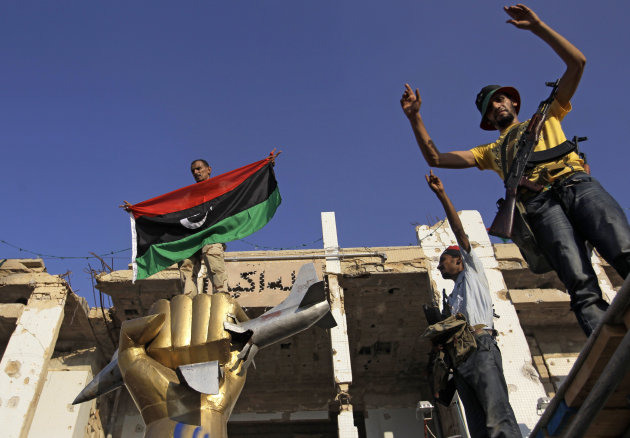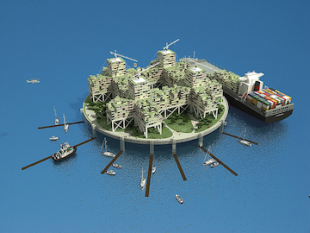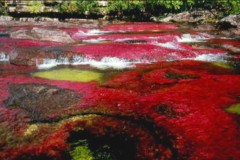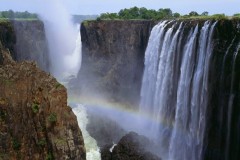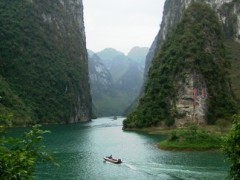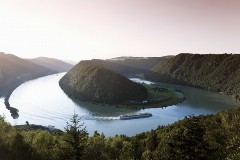SCENIC, South Dakota (AP) – The saloon is long empty. The roadside jail cells, rusted and worn. Even the swing sets peek from behind knee-high brush after decades of neglect.
By Amber Hunt, AP
The Longhorn Saloon in Scenic, S.D., is still adorned with cattle skulls and emblazoned with the building's founding date of 1906.
This tiny exclave just west of South Dakota's badlands is officially an old ghost town. But its future is shrouded in new mystery.
"We don't know what's coming," said Kathy Jobgen, 50, the only employee remaining at the only business still in town: the U.S. Post Office.
The town of Scenic — once a popular stop for people traveling to Rapid City from the badlands to the east orPine Ridge Reservation to the south — was recently purchased by an unusual buyer for less than $800,000. The Church of Christ , established in the Philippines in 1914, bought the town and surrounding acreage from longtime resident and area rodeo legend Twila Merrill, who had gathered the land bit by bit over several decades.
The Church of Christ isn't divulging its plans for the property. A person answering the phone at its offices in Daly City, California, said he couldn't share any information, as did staffers of church spokesman Bienvenido Santos.
"They've got a non-disclosure agreement, and I'm a signatory to that," said David Olsen, the real-estate agent who represented Merrill's family in the sale.
He was only comfortable offering bits of detail — the saloon and other boarded-up buildings still standing along Main Street will stay, he said — but he said he couldn't give specifics.
"The gas station will be open for business again soon enough," said Olsen, of Coldwell Banker in Rapid City. The church purchasers are "interested in it being a benefit to the community."
The church, which translates in the language Tagalog to Church of Christ , has been steadily spreading west since it was founded in the Philippines by Felix Manalo, a former minister of the Seventh-Day Adventist Church who experienced what he claimed to be a call similar to those of ancient prophets. He died in 1963.
Often described as one of the fastest-spreading international religions, its foothold in the Philippines grew from about 1.4 million followers in 1990 to 1.7 million in 2000, according to the 2011 figures released by the National Statistics Office in Manila.
Church of Christ rejects the Christian doctrine of trinity and believes Christ is one of several prophets. The Church of Christ is focused on the end times, believes Manalo is a prophet and considers the Catholic Church apostate.
It has a divisive reputation. The Church of Christ 's backing has been viewed as crucial in Filipino presidential elections, and it has been accused of organizing bloc voting in that country. It also is known for its secrecy, rarely commenting on its activities.
So far, there has been no Church of Christ activity in Scenic to hint at what's to come — no construction permits have been sought or nor have any development plans been presented to the county. The lack of information surrounding the sale has some neighbors uneasy and rumors are circulating among the scattering of residents.
"They bought it sight unseen," said Shirley Kudrna, whose father-in-law was born on a ranch about seven miles (11 kilometers) east of Scenic in 1916.
"Some people say maybe they're a cult," said her father-in-law, Tony Kudrna, 95, who has lived on the ranch nearly his whole life.
The Church of Christ has expanded to more than 5,000 congregations in the Philippines, and more than 600 abroad in more than 60 countries and territories, according to the Manila Times. It has held neighborhood events to praise the hospitality of the communities where it has purchased land to build homes and churches, including Los Angeles, Orlando, and Union County, New Jersey.
Other congregations are established nationwide in more than 40 states, according to the Church of Christ 's website. Dozens are listed in California, 10 in Washington state, 12 in Texas and seven in New York.
Jobgen said she's hopeful the Church of Christ will make for a good neighbor.
"I'm excited about the possibilities," said Jobgen, who also runs the Jobgen Ranch with her husband.
The intersection of flourishing religion and foundering town is perplexing: In 1915, the state Highway 44 pit stop of Scenic enjoyed its largest population of 155 residents, according to records kept by the South Dakota State Historical Society.
At its peak, the town that's pure Old West had two restaurants, three gas stations, two bulk filling stations, a hotel, a school, a bank and a post office. Tony Kudrna's sister worked at one of the restaurants, he recalled. To travel from his homestead to the comparatively bustling town, he went by horse-drawn wagon.
The remnants still dot the 12 acres (five hectares) that qualify as deserted town. The buildings that remain are padlocked closed and have plywood over their windows and doors, but the flavor of the time is still very much present: The sign above the Longhorn Saloon is lined with aged cattle skulls and emblazoned with the structure's year of construction — 1906.
The wooden general store is adorned with rusted wagon wheels and a carved sign that reads: "ASHES TO ASHES — DUST TO DUST— IF WE DON'T HAVE IT — IT ISN'T A MUST."
Merrill, a rancher and rodeo regular, began buying Scenic property in 1963. Olsen said her health began to fail about two years ago, and as cancer took hold, Merrill was forced to put the land — 46 acres (19 hectares) in total — on the market.
It languished for two years with a $3 million price tag. In July, Olsen stepped in and dropped the cost to $799,000.
Suddenly, prospective buyers stepped forward from all over the world, said Olsen, estimating that he took more than 500 phone calls and 200 emails about the property. He appeared on television programs in Australia, London, Montreal, Chicago and Atlanta, he said.
The offer from the Church of Christ was one of several.
"It was Twila's decision as to who she chose," Olsen said. "She seems to be real happy with it."
What happens next is not known publicly. Olsen said the property will be cleaned of dilapidated buildings and overgrown brush, but he said the buildings at the town's heart will remain. Not even Merrill and her family know more than that, he said.
"They do not know the plans," he said. "They're as eager as everybody else."
Copyright 2011 The Associated Press. All rights reserved. This material may not be published, broadcast, rewritten or redistributed.





